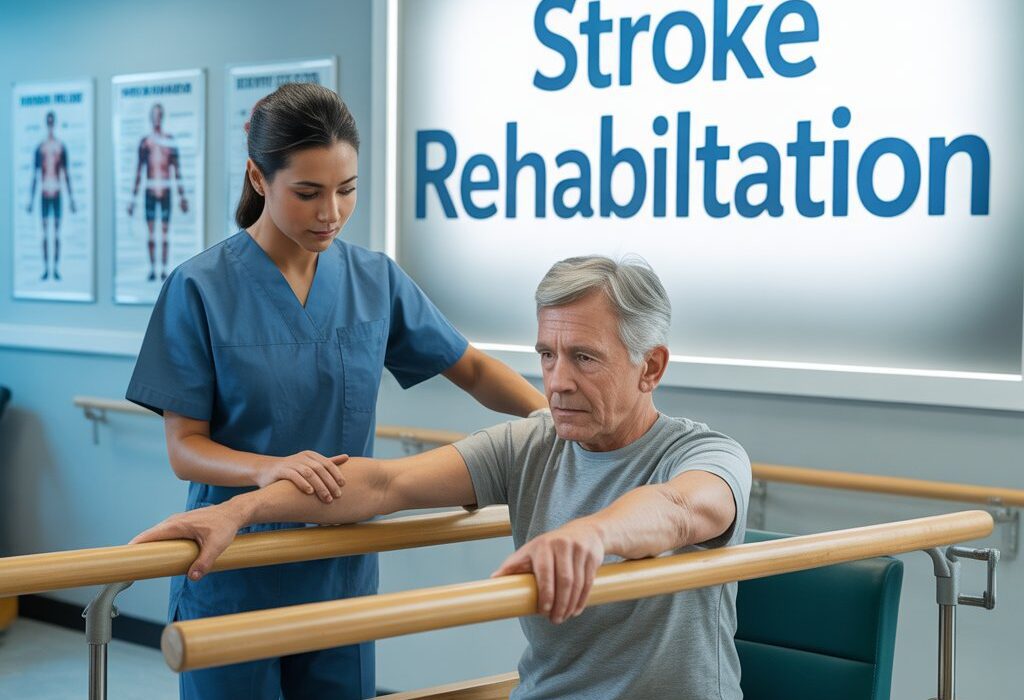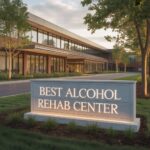A Guide to Stroke Rehabilitation: The Path to Recovery
A stroke is a life-altering event that occurs when the blood supply to part of the brain is interrupted, depriving brain tissue of essential oxygen and nutrients. In the moments and days following a stroke, the focus is rightly on emergency medical care and stabilization. However, the journey toward reclaiming independence and quality of life truly begins with stroke rehabilitation. This process is a carefully designed and compassionate program aimed at helping survivors relearn skills that were lost when a part of the brain was damaged. It is a journey of courage, patience, and incremental progress, representing the most critical phase for long-term recovery and well-being.
The core principle behind stroke rehabilitation is neuroplasticity—the brain’s remarkable ability to reorganize itself by forming new neural connections throughout life. This means that undamaged parts of the brain can learn to take over functions previously handled by the damaged areas. Consequently, stroke rehabilitation is not a passive process; it is an active, intensive collaboration between the survivor, their family, and a dedicated team of healthcare professionals. The ultimate goal is to help the individual return to the highest possible level of independence and function, improving their physical, emotional, and social well-being.
The Multidisciplinary Team: Your Partners in Recovery
Effective stroke rehabilitation relies on a coordinated team of specialists, each addressing a specific aspect of recovery. This collaborative approach ensures that all of a survivor’s needs are met comprehensively.
Physical Therapists: Restoring Movement and Balance
Physical therapy (PT) is fundamental for regaining motor control. A physical therapist works with survivors to improve muscle strength, coordination, and balance. This often involves exercises to overcome weakness on one side of the body (hemiparesis), relearn walking patterns (gait training), and manage spasticity. The goal is to enhance mobility, reduce the risk of falls, and build the physical confidence needed for daily activities.
Occupational Therapists: Regaining Independence in Daily Life
While PT focuses on gross motor skills, occupational therapy (OT) concentrates on the fine motor skills needed for daily tasks, known as Activities of Daily Living (ADLs). An occupational therapist helps survivors relearn how to dress, bathe, cook, and eat independently. They may introduce adaptive techniques and tools, such as special utensils or dressing aids, and work on improving hand-eye coordination and cognitive skills related to task completion.
Speech-Language Pathologists: Reconnecting Communication
Strokes can affect the brain’s language centers, leading to a condition called aphasia, which impairs the ability to speak, understand, read, or write. Speech-language pathologists (SLPs) use specialized exercises to help survivors retrieve words, form sentences, and improve swallowing function (dysphagia), which is crucial for safe eating and drinking.
Core Components of a Comprehensive Rehab Program
A robust rehabilitation program integrates several evidence-based components to address the multifaceted challenges following a stroke.

Motor-Skill Exercises
These targeted exercises are designed to improve the coordination and strength of muscles. This includes practicing grasping and releasing objects, walking, and transferring from a bed to a chair. Repetition is key, as it helps stimulate neuroplasticity and rebuild the neural pathways that control movement.
Mobility Training
Survivors often need to learn to use mobility aids safely and effectively. This can include learning to walk with a walker, cane, or brace, or mastering the techniques for transferring in and out of a wheelchair. The aim is to promote as much independence in movement as possible.
Constraint-Induced and Electrical Stimulation Therapies
For survivors with affected limbs, Constraint-Induced Movement Therapy (CIMT) can be highly effective. This involves restricting the use of the unaffected limb, forcing the brain to use and strengthen the affected one. Similarly, Functional Electrical Stimulation (FES) uses electrical currents to stimulate weakened muscles, causing them to contract. This can help improve muscle function and re-educate muscles on how to move properly.
Psychological Care and Support
The emotional impact of a stroke can be profound, often leading to feelings of grief, anger, anxiety, and depression. Addressing mental health is a non-negotiable part of comprehensive care. Psychologists and counselors provide crucial support, offering coping strategies and therapeutic interventions. Furthermore, support groups connect survivors with peers who understand their journey, reducing feelings of isolation and providing a network of encouragement.
The Importance of a Strong Support System and Technology
Recovery extends far beyond the therapy sessions. The involvement of family and caregivers is invaluable. They can learn techniques from therapists to provide effective support at home, offer emotional encouragement, and help the survivor stay motivated. Additionally, technology is playing an increasingly vital role in modern rehabilitation. Virtual reality systems, robotic devices, and tablet-based apps can make therapy more engaging, provide precise feedback, and allow for intensive, repetitive practice in a controlled environment.
A Journey of a Thousand Steps
Stroke rehabilitation is a marathon, not a sprint. It requires immense perseverance from the survivor and unwavering support from their loved ones. Progress may be measured in small, hard-won victories—a step taken, a word spoken, a shirt buttoned. Each of these victories is a testament to the human spirit’s resilience. By engaging fully in a personalized, multidisciplinary stroke rehabilitation program, survivors can make significant strides toward reclaiming their independence and building a new, fulfilling life after a stroke. The path may be challenging, but it is paved with hope and the potential for remarkable recovery.
Frequently Asked Questions (FAQs)
1. How soon after a stroke should rehabilitation begin?
The rehabilitation process should begin as soon as the patient is medically stable, often within 24 to 48 hours after a stroke. Early intervention is crucial for taking full advantage of the brain’s heightened plasticity in the early stages of recovery, which can lead to better outcomes.
2. How long does stroke rehabilitation typically last?
The duration varies significantly from person to person, depending on the stroke’s severity and the individual’s progress. It can range from a few weeks to over a year. Rehabilitation often occurs in phases, starting with intensive inpatient care and transitioning to outpatient therapy or home-based programs.
3. What is the most important factor for a successful recovery?
Consistency and active participation are the most critical factors. The brain relearns through repetitive, task-oriented practice. A survivor’s motivation and diligent work in therapy sessions, combined with a strong support system, are the strongest predictors of a successful long-term outcome.
4. Can you make a full recovery from a stroke?
While some survivors make a nearly full recovery, many will have some lasting effects. The goal of rehabilitation is to maximize a person’s abilities and help them achieve the highest possible level of independence, even if some impairments remain. The brain’s neuroplasticity means that progress can continue for months or even years.
5. What role do family members play in the rehabilitation process?
Family members are essential partners. They provide emotional support, help with practicing exercises at home, assist with communication, and can learn how to manage daily care needs. Their encouragement and involvement can significantly boost the survivor’s motivation and overall progress.


